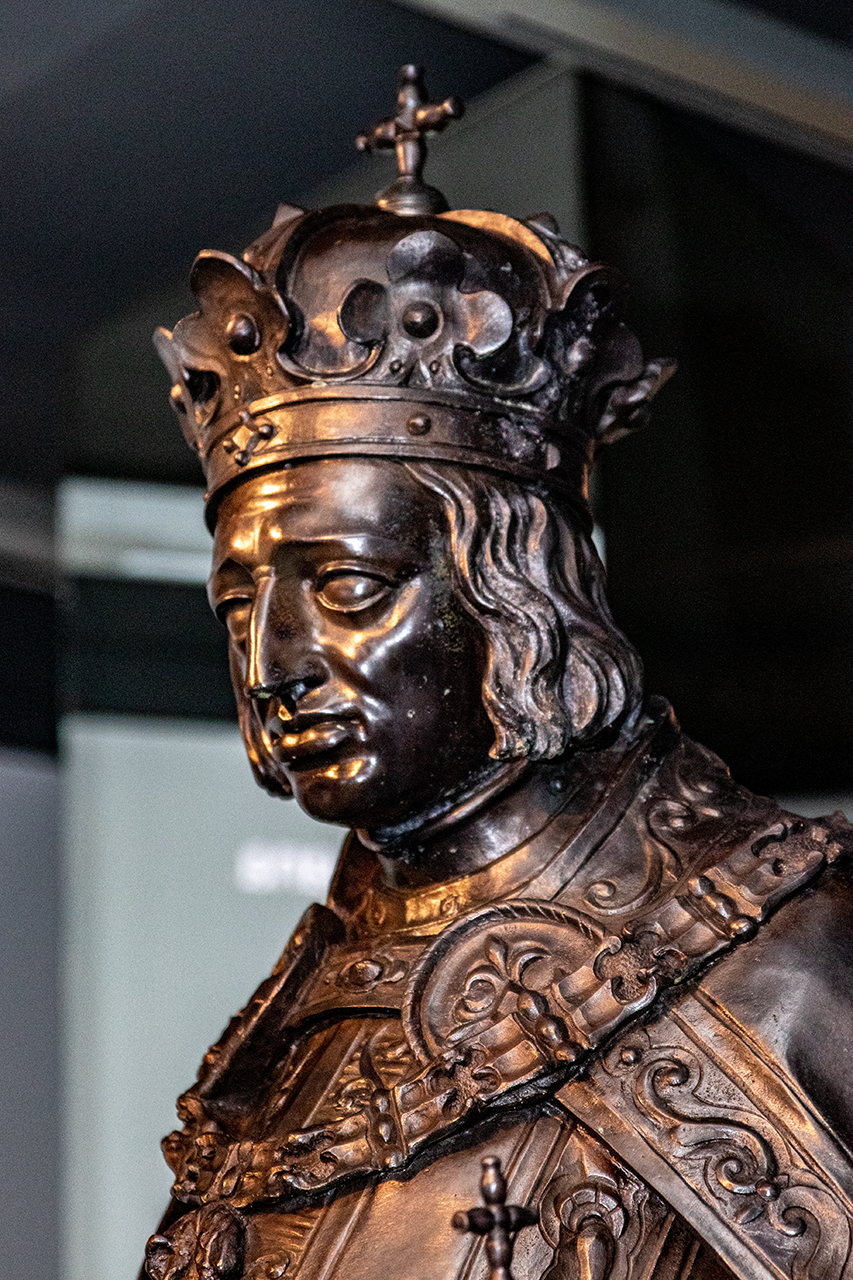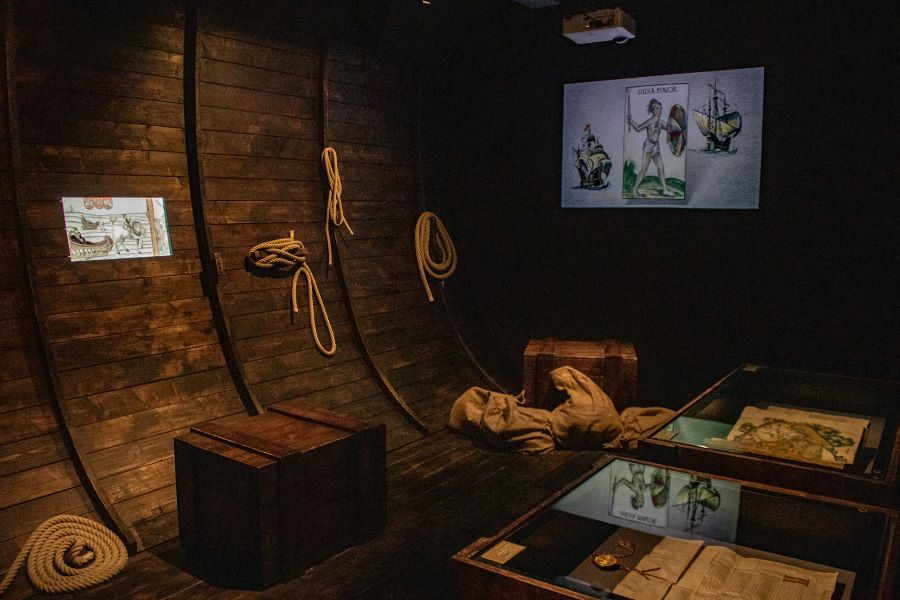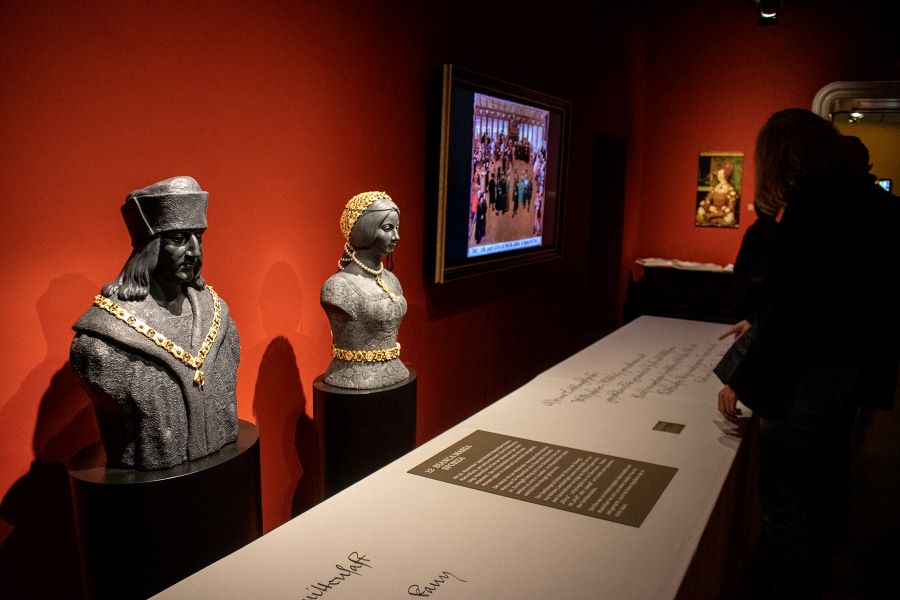Maximilian1
Information on the permanent exhibition at Hofburg Innsbruck should inspire you to visit. We look forward to welcoming you.

About the permanent exhibition
Emperor Maximilian I is considered to be one of the most famous members of the House of Habsburg. His matrimonial policy laid the foundations for the later ascent of the House to the most powerful dynasty in Europe. Fickle fortunes of war were to shape his life as well as the latest technological innovations of the time, which he made perfect use of.
The date of 12 January 2019 marked the 500th anniversary of his death. To commemorate this occasion, Burghauptmannschaft Österreich organised an exhibition from May 25th to October 12th, 2019 in the Imperial Palace Innsbruck, which was entitled: Jubilee Exhibition Maximilian I and the Rise of the Modern Age. It also laid the founding stone for a permanent exhibition, which was installed in the Palace following the great success of the jubilee exhibition. It was inaugurated on November 22nd, 2019 after a short adaptation phase.
Cutting edge multi-media technology was used not only to present the personality of Emperor Maximilian I (1459–1519), his wives, the life at court, and the events that left a deep impression on him, but also to point out issues of European and global relevance: For instance, the European expeditions to the West and Siegmund von Herberstein’s journeys to the East on behalf of the Emperor are dealt with in this regard. Latest research findings on the architectural history, the political, the religious and the economic context round off the exhibition.
By July 2020, the permanent exhibition was expanded to shed more light on the so-called Mummereien (mummeries), which refer to special costume parties at Maximilian’s court. As of May 2021, the first special exhibition featuring Maximilian I –The Emperor and His Tournaments opened to the public. After the end of the exhibition, it was transferred to the permanent exhibition.
Dates
Special guided tours completes the permanent exhibition. Furthermore, it is also possible to book a guided tour with the curator of the exhibition, who will give you an exclusive insight into the exhibition. To learn more about the dates, please go to Guided Tours or take a look at the current programme of Imperial Palace Innsbruck
Tickets
Get your ticket now!
You may purchase your entrance ticket via our online ticket shop or at the cash desk of Imperial Palace Innsbruck.

The project team organising the exhibition “Maximilian 1 and the Rise of the Modern World” consists of the following members:
Project Manager
Markus Wimmer
Born in 1969, Markus Wimmer studied Economics at the University of Linz. Subsequently, he worked eight years for the Ministry of Economy of the Federal Republic of Austria. He has been deputy head of Burghauptmannschaft Österreich since 2006. As such, he oversees all construction matters, in particular matters with regard to the imperial palaces in Vienna and Innsbruck. Furthermore, he is responsible for the entire accounting of Burghauptmannschaft Österreich.
Assistant Project Manager
Christian Gepp
Born in 1984 in Vienna, he studied Physics and History, and Economic and Social History at the University of Vienna. Christian Gepp, who writes his doctoral thesis at the Institute of Economic and Social History of the University of Vienna, has worked as a teacher at numerous universities. He joined Burghauptmannschaft Österreich in 2017.
Curator
Monika Frenzel
Monika Frenzel studied Art History and Medieval History at the University of Innsbruck. Being a certified Austria Guide she founded a culture association in 1993 and became a teacher for Art History in Tyrol. Having curated a plethora of exhibitions, worked as an author and organised historic events, she is very well-known to a wide public audience.
Assistant Curator
Stefanie Heim
Born in 1991 in Brexlegg, Stefanie Heim studied Archaeology and History at the University of Innsbruck. She currently writes her doctoral thesis in the field of "Medieval and Modern Archaeology – the Archaeology of the Napoleonic Wars in Tyrol" (since 2016).
Exhibition Architect
Gerhard Veigel
Gerhard Veigel has worked as a designer and planner for art exhibitions at Artex Art Services since 1995. In the year 2012, he opened a studio of his own, specialising in museums and exhibition services. As such, he has contributed to the design, planning and implementation of a wide array of exhibition projects in Austria and abroad.
Art-Director
Manfred R. Corrine
Born in 1963 in Vienna, Manfred R. Corrine studied Theater Studies and Journalism at the University of Vienna. Subsequently, he was trained in the film craft and founded the company mrc-film in 1998. He is an internationally recognised author and film-maker of documentaries for diverse channels of television broadcasting, such as ORF, ServusTV, ZDF, WDR, NDR, Arte, BBC, Smithonian Channel und Discovery Channel.

Topics
Future emperor Maximilian I spent much of his childhood at the court in Wiener Neustadt where he received a comprehensive but strict education. When he was still a child, the imperial family and Maximilian were besieged at the Imperial Palace Vienna for months as a result of power struggles. Also, the untimely death of his mother, Eleanor of Portugal, was a severe stroke of fate for him: not only did she die young, but he had loved her dearly, having received from her the compassion and warmth his strict father Frederick III lacked. Burgundy, where young Maximilian lived with his first wife, Maria, was to leave a deep impression on him, too: Not only was it considered to be the happiest chapter in his life, but it also was in Burgundy where he learned what it was like to live in one of the most economically, culturally, and intellectually advanced courts in Europe.
Around 1500, Innsbruck was one of the main centres of Early Modern Capitalism. Rich silver deposits at Schwaz brought about rapid economic growth and increasing wealth. The professions of blacksmith, forger, and iron caster became very popular in Innsbruck, as armours, cannons, and bells were produced there. The exhibition features the ceremonial armour of Emperor Maximilian I, elaborate suits of armour, weapons, and bells from the time of Maximilian I.
The silver mined in Schwaz was turned into coins in Hall, famous examples of which are the Taler and the Guldiner, which were known all over Europe. Important merchant families such as the Fuggers opened trading posts abroad and made investments, especially in mining. Maximilian I, deeply indebted, had to give part of the Schwaz silver mine to Jakob Fugger the Rich in order to meet his increasing financial obligations. Maximilian I sent a legation to Russia, thus participating in the worldview-altering European Age of Exploration.
After the tragic death of Mary of Burgundy, Emperor Maximilian I married Bianca Maria Sforza of Milan in 1493. The marriage came with an opulent dowry of 400,000 florins, and brought Italian lifestyle to Innsbruck, notably in terms of customs, traditions, fashion, and hunting. The extensive bridal inventory, for instance, provides interesting insights. For the first time, a replica of Bianca Maria’s wedding jewellery will be exhibited.
Little appreciated, but a remarkable historical personality: Bianca Maria Sforza. The second wife of Emperor Maximilian I is often portrayed only as an unloved woman.
Bianca Maria was born in 1472 as the daughter of the Milanese Duke Galeazzo Maria Sforza and Bona of Savoy. In 1476, at the age of only four, she was married to Philibert I of Savoy, who was seven years older, but died at the age of 17. Bianca's uncle, Ludovico, was then the driving force behind his niece's marriage to Emperor Maximilian I.
The latter, after the early and tragic death of his first wife Mary of Burgundy, was in search of a new wife who could act not only as ruler but also as mother to his two children Philip and Margaret. Bianca Maria brought a generous dowry to the marriage, which was contracted in a proxy marriage in 1493 and then in Hall in 1494.
However, the new queen came to Tyrol not only with the promised dowry, but also with a considerable collection of jewellery, clothing and books, which was still considered unusual for women of the time. This alone underlines not only that she was a woman of many interests and very inquisitive herself, but also the value that education in general had for her.
Historical plans and layouts as well as archaeological evidence provide information on the late Gothic Imperial Palace Innsbruck. For the exhibition, a 3D model was created. The model tells the story of the city as it was around the year 1500. Furthermore, it highlights the measures taken by Maximilian I in his role as builder and urban developer. Which functions and uses were assigned to the single rooms of Imperial Palace Innsbruck? Where were the "Women’s Quarters" or the Emperor’s apartments? And where was Maximilian’s lathe? These are but some of the questions this part of the exhibition will answer.
Maximilian I’s matrimonial policy, which was partly based on chance and luck, laid the foundations for the later ascent of the House of Habsburg to global power. His children’s Spanish double wedding in 1496/97 is of special significance in this regard, as is the double wedding of his grand-children in 1515. Nuptial unions with royal houses provided the House of Habsburg with important places in the line of succession. The portraits, digital animations, and maps on display in the exhibition illustrate these events and reveal the Habsburgs’ growing sphere of influence.
"He who does not provide for his memory while he lives, will not be remembered after his death…"
This quote of his underlines the significance the Emperor attached to "memoria": He had his biography ("Weisskunig"), an adventure novel ("Theuerdank"), and a tournament book ("Freydal") written, and he commissioned the construction of a gate and triumphal procession in his honour. To do so, he relied on a medium that had just been invented: book printing. The memorial in the Court Church of the Imperial Palace Innsbruck, with its bronze statues and cenotaph, constitutes the highlight of Gedechtnus. The exhibition digitally revives this significant piece of art.